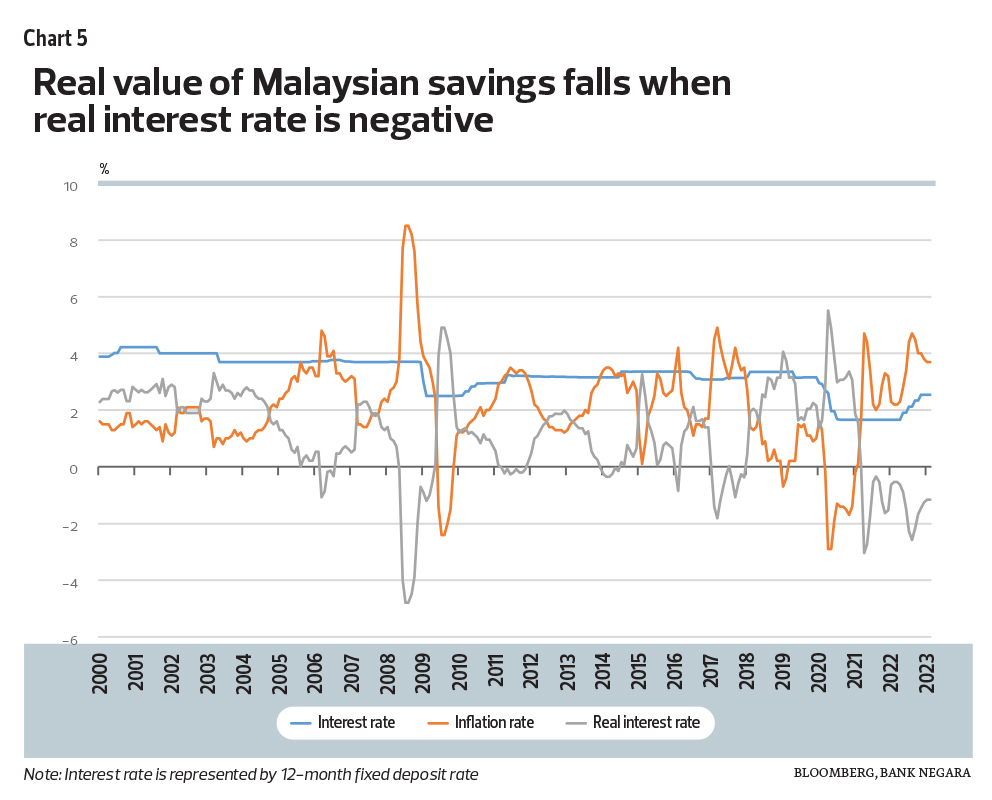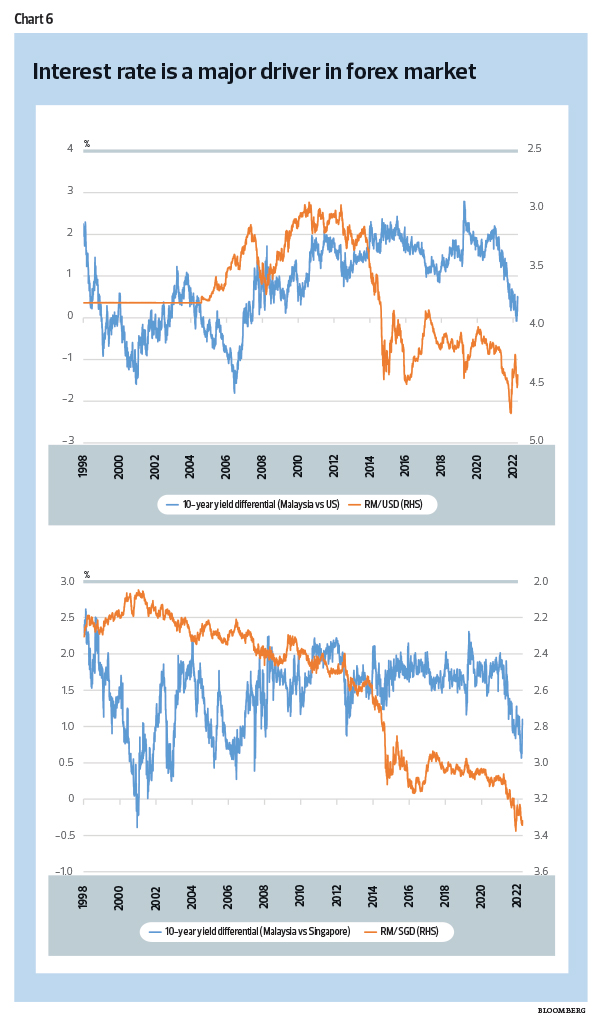Bank Negara’s tempered OPR hikes limit interest rate risks for banking system …
… but there is a trade-off
As with everything in life, there is a trade-off. And as we have always said, there is no free lunch in economics.
- First, savers could have obtained more had interest rates gone higher. With high inflation, savings are now earning negative real rates (that is, below inflation) (see Chart 5).
- Second, the trade-off is a weaker ringgit — and higher cost of living for all Malaysians.
The interest rate is the price of money (or credit or time, if one is inclined to be argumentative) — and it certainly is one of the major drivers in foreign exchange movements (see Chart 6); although this relationship is by no means linear or perfect.
- Can a country maintain a relatively low interest rate while also stabilising its exchange rate?
- Is the weak ringgit a function of the interest rate differentials between the ringgit and other currencies or are there even more dominant factors?


No comments:
Post a Comment